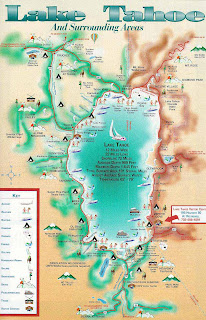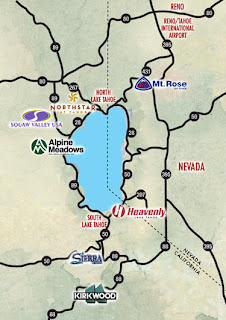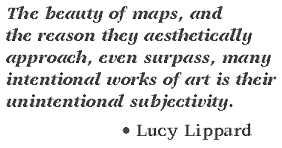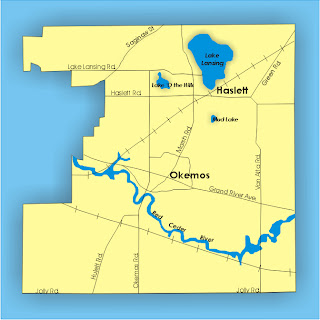My experiences in this course using methods of Collaborative Cartography have been valuable. I think that by posting ideas to an editable webpage, such as our Wikispaces page, cartographers are able to put out their thoughts and opinions on certain subjects and then gauge the response of others to those thoughts and opinions. At first I was concerned that the ideas I posted to the Wiki would be overly scrutinized and criticized by my classmates, but I found that not to be the case. Any comments or suggestions I received were only intended to be helpful and constructive, not mean-spirited or hurtful.
Below is an excerpt from Cartography and GIS- extending collaborative tools to support virtual teams.pdf that I think sums up the idea of Collaborative Cartography very succinctly:
“Geocollaboration is a relatively new but important area of research for geography and related disciplines. The dramatic changes in technology that are making wireless, mobile communication and data dissemination possible will have a substantial impact on how and where work is done and how individuals and groups collaborate…Thus, social, political, economic, and other geographers, who are well equipped to address these impacts, will play as big a role in development of geocollaboration as will those focusing on the underlying GIScience problems.”
Technology has allowed collaboration in many diverse settings. Collaboration can now occur in virtual meeting spots like our class Wiki, through blogging and responding to the blogs of others, through internet email or cell phone converstations, etc… No longer do you have to meet with people face to face to share and exchange ideas. Collaborative processes can now occur regardless of location as long as access to the technology is available. But, We Can't Forget That Collaboration "In The Same Room"([face to face]) Is Also Valuable And Nessecary.
FACE (:<----->:) FACE + Collaboration via Technology = GOOD CARTOGRAPHY
-----------TO
One other blog site Pat suggested we look at was called Collaborative Cartography and Location Sensing. This blog entery posed some of the possible problems of using the technologies that make collaborative cartography possible to blur the line between what is public and what is private. The blog states that "these technologies bring new abilities within the reach of ordinary people – for such benign activities as collaborative cartography and geocaching. They [the new technologies] do pose more problematic considerations when issues of surveillance and personal privacy arise. It is not just surveillance by big government, nor even by corporations greedy to learn more about consumer habits the better to target them with offers. It is also the potential for everyday surveillance of each other by each other – from that of parents watching over their children, to friends and lovers checking up on each other. "
A good point is made here. During the collaborative cartography process ideas could be stolen or ideas could be misinterpreted and then incorrectly applied. In the process of collaborative cartography your own private ideas become part of public discourse. Oftentimes this leads to better overall products because many people's viewpoints are taken into consideration and things you may not consider may be considered during collaborative efforts with others. But I think you must undertake these collaborative efforts in a situation in which you are sure of who you are sharing ideas and information with. Putting your ideas out there to see what others think is good, but having someone take and use your ideas without giving you any credit would be bad.
Having a forum in which to discuss, for example, our Nevada Atlas Pages was extremely helpful. Being able to browse previouly posted page ideas helped to spark some ideas in my own mind about possible topics that may or may not be related to the ones already posted. THE MORE IDEAS FROM WHICH YOU CAN DRAW, THE MORE DIVERSE AND WELL-ROUNDED YOUR FINAL PRODUCT WILL BE.
Below is an excerpt from Cartography and GIS- extending collaborative tools to support virtual teams.pdf that I think sums up the idea of Collaborative Cartography very succinctly:
“Geocollaboration is a relatively new but important area of research for geography and related disciplines. The dramatic changes in technology that are making wireless, mobile communication and data dissemination possible will have a substantial impact on how and where work is done and how individuals and groups collaborate…Thus, social, political, economic, and other geographers, who are well equipped to address these impacts, will play as big a role in development of geocollaboration as will those focusing on the underlying GIScience problems.”
Technology has allowed collaboration in many diverse settings. Collaboration can now occur in virtual meeting spots like our class Wiki, through blogging and responding to the blogs of others, through internet email or cell phone converstations, etc… No longer do you have to meet with people face to face to share and exchange ideas. Collaborative processes can now occur regardless of location as long as access to the technology is available. But, We Can't Forget That Collaboration "In The Same Room"([face to face]) Is Also Valuable And Nessecary.
FACE (:<----->:) FACE + Collaboration via Technology = GOOD CARTOGRAPHY
-----------TO
One other blog site Pat suggested we look at was called Collaborative Cartography and Location Sensing. This blog entery posed some of the possible problems of using the technologies that make collaborative cartography possible to blur the line between what is public and what is private. The blog states that "these technologies bring new abilities within the reach of ordinary people – for such benign activities as collaborative cartography and geocaching. They [the new technologies] do pose more problematic considerations when issues of surveillance and personal privacy arise. It is not just surveillance by big government, nor even by corporations greedy to learn more about consumer habits the better to target them with offers. It is also the potential for everyday surveillance of each other by each other – from that of parents watching over their children, to friends and lovers checking up on each other. "
A good point is made here. During the collaborative cartography process ideas could be stolen or ideas could be misinterpreted and then incorrectly applied. In the process of collaborative cartography your own private ideas become part of public discourse. Oftentimes this leads to better overall products because many people's viewpoints are taken into consideration and things you may not consider may be considered during collaborative efforts with others. But I think you must undertake these collaborative efforts in a situation in which you are sure of who you are sharing ideas and information with. Putting your ideas out there to see what others think is good, but having someone take and use your ideas without giving you any credit would be bad.
Having a forum in which to discuss, for example, our Nevada Atlas Pages was extremely helpful. Being able to browse previouly posted page ideas helped to spark some ideas in my own mind about possible topics that may or may not be related to the ones already posted. THE MORE IDEAS FROM WHICH YOU CAN DRAW, THE MORE DIVERSE AND WELL-ROUNDED YOUR FINAL PRODUCT WILL BE.





 There are maps of
There are maps of 





















